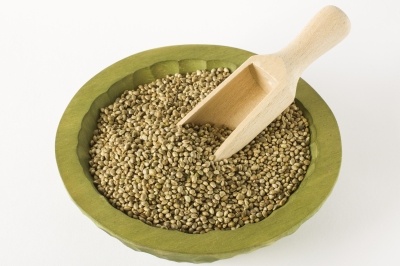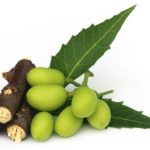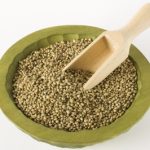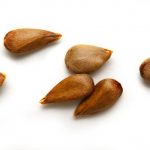
Pumpkin seeds have long been valued as sources of zinc and we continue to enjoy them in various food products like bars, breads, cakes, seed mixes and the like. These seeds are collected from the pumpkin (Curcubita pepo L.). They are consumed either raw or roasted and in some cases salted for flavour.
The seeds contain various fatty acids such as linoleic acid (55%) and other componentry which include micronutrients, such as vitamin E, phytosterols and lignans. The main storage protein is curcurbitin which is a 12S, hexameric globilin. There are a number of antioxidants present too (Fruhwirth et al., 2003) and these have subsequently been examined (Xanthopoulou et al., 2009).
The physical properties of the seeds and their kernels have been evaluated for research and engineering purposes (Joshi et al., 1993).
The main benefits are:-
– Full of valuable nutrients
– Rich in antioxidants
– Linked with a reduction in some cancers
– Improve prostate and bladder health
– High magnesium content
– My improve heart health
– Potential to lower blood sugar levels
– High fiber content
– Could improve sperm quality
– Could improve sleep
– Easy to include in the diet
Seed Oil
The seed oil is commonly known as ‘diesel’ is highly valued as a salad oil in Austria, Serbia and Hungary. It has a distinctive taste and is also valued from the health point of view for its potential to cure prostate disease. The seeds are roasted before oil is pressed from them. Roasting causes changes to occur in the composition of the fatty acids and micronutrients.
The nutritional value of the seed oil depends to some extent on the cultivars and demonstrated in 12 cultivars from Iowa. The seed oil content ranges from 11% to 31% w/w with a total unsaturated fatty acid content ranging from 73% to 80% (Stevenson et al., 2007). Most commercial preparations appear to contain between 47 and 50 per cent PUFAs (polyunsaturated fatty acids). The predominant fatty acids are linoleic, oleic, palmitic, and stearic acids. The tocopherol content of the oils generally range from 27.1 to 75.1 μg/g of oil for α-tocopherol, from 74.9 to 492.8 μg/g for γ-tocopherol, and from 35.3 to 1109.7 μg/g for δ-tocopherol. Procida et al., (2013) has conducted an examination of commercial pumpkin seed oils.
- Pure pumpkin seed oil contains valuable source of vitamins: A, B1, B2, C, E and H.
- Rich source of minerals such as iodine, magnesium, iron, potassium, sodium, zinc, phosphorus and calcium.
Uses Of Pumpkin Seed Oil
- strengthens immunity,
• helps with skin allergies and burns,
• contains beta-carotene which has positive impact on vision,
• applied externally can be used for all skin types,
• reduces wrinkles,
• has anti-cellulite properties,
• used as hair conditioner.
Products
If you are interested in products containing pumpkin seeds then look no further then the Nakd range of products which contain a variety of nuts, seeds, fruit pieces etc. A couple contain pumpkin seeds.
References
Fruhwirth, G. O., Wenzl, T., El-Toukhy, R., Wagner, F. S. and Hermetter, A. (2003), Fluorescence screening of antioxidant capacity in pumpkin seed oils and other natural oils. Eur. J. Lipid Sci. Technol., 105: pp. 266–274. doi: 10.1002/ejlt.200390055
Joshi, D. C., Das, S. K., & Mukherjee, R. K. (1993). Physical properties of pumpkin seeds. Journal of Agricultural Engineering Research 54(3), pp. 219-229 (Article).
Murkovic, M., Piironen, V., Lampi, A. M., Kraushofer, T., & Sontag, G. (2004). Changes in chemical composition of pumpkin seeds during the roasting process for production of pumpkin seed oil (Part 1: non-volatile compounds). Food Chemistry, 84(3), pp. 359-365 (Article)
Procida, G., Stancher, B., Cateni, F., et al. (2013) Chemical composition and functional characterization of commercial pumpkin seed oil. Journal of the Science of Food and Agriculture, 93 pp. 1035-1041
Stevenson, D. G., Eller, F. J., Wang, L., Jane, J. L., Wang, T., & Inglett, G. E. (2007). Oil and tocopherol content and composition of pumpkin seed oil in 12 cultivars. Journal of Agricultural and Food Chemistry, 55(10), pp. 4005-4013
Xanthopoulou, M. N., Nomikos, T., Fragopoulou, E., & Antonopoulou, S. (2009). Antioxidant and lipoxygenase inhibitory activities of pumpkin seed extracts. Food Research International, 42(5), pp. 641-646



Leave a Reply